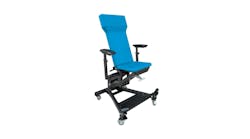Content brought to you by ABRN. To subscribe click here.
What you will learn:
• Consolidation among market forces continues to increase since COVID came about
• 60 percent of all claims are handled by the top five insurers, and 50 percent of all repairs are handled by 10 repairer groups
• We are beginning to see the emergence of genuine partnerships enabled by technology
In my ongoing look at the convergence of market forces that will impact the collision repair industry, I will focus on consolidation and the new partnerships that will emerge in the coming years.
The big get bigger
Over the past 10 years, we have seen significant consolidation of the collision repair market. Caliber (with about 1,400 shops), Boyd/Gerber (about 800 shops) and Service King (about 350 shops prior to its July merger with Crash Champions) grew rapidly and seemingly unabated.
Whereas things slowed during COVID, we are seeing more consolidation taking place in 2021 and 2022. We are also witnessing the growth of “regional” MSOs, such as Classic Collision and Joe Hudson’s Collision, that are well-capitalized and well-organized. Add in the growth of banner and franchise groups (Driven Brands is the best example), and it’s clear to see how over 50 percent of all repair work could be handled by just 10 controlling entities.
What may have been less noticeable is the big getting bigger in the insurance segment. Think back those same 10 years, and you can see some consolidation by acquisition (Liberty Mutual acquired Safeco, and Allstate acquired National General). But the large insurers also are organically gaining market share. GEICO had 9.6 percent market share in 2012; at the end of 2021, it had 14.4 percent, the equivalent of GEICO adding all of USAA’s book of business.
Progressive has grown just as impressively. In 2012, it had just 8.3 percent market share; by 2021, that was 13.8 percent, the equivalent of adding Farmers’ entire book of business.
The point here is that controlling interest (and with it, influence) is changing, with fewer entities now responsible for more claims and repairs. As it stands, 60 percent of all claims are handled by the top five insurers, and 50 percent of all repairs are handled by 10 repairer groups. That’s structural change.
There has also been supply chain consolidation. The best example is OEConnection’s acquisitions of NuGen IT, Summit, VeriFacts, Assured Performance, OPSTrax and Repair Logic.
Scale is an attractive business proposition. Expect to see these large growing entities finding ways to partner with each other to leverage this scale.
Partnerships
“Partnership,” as it relates to the collision repair business, has been a loosely held term for many years. Shops might well believe they are “partners” with insurance carriers. My perspective is that these partnerships are heavily biased toward the larger entity. (Think I’m wrong? Check your DRP agreement.)
What we are beginning to see now is the emergence of genuine partnerships enabled by technology. COVID taught us to become more reliant and embracing of technology. Think Zoom meetings and virtual/digital estimates, and you can see how technology is compressing time, as I like to say.
There is little doubt that technology will change the first notice of loss (FNOL) and claims intake, and furthermore have a significant impact on how “work gets to the repair shop’s door” in the coming years. The partnerships I’m predicting, though, are much broader than the current direct insurer assignment to DRP shops.
New entrants are working on how to identify the accident at source (the vehicle at the moment of impact), creating technology and workflow partnerships to make the entire claims process far more streamlined and customer-centric. Add in the OEMs’ efforts that are full speed with insurance offers and FNOL solutions, and it’s not unthinkable to envision partnerships between OEMs, insurers, IT providers and MSOs for large (think 50 percent of the repairable market) chunks of claims, with repair business being “influenced” by just a handful of these partnerships.
This will require a rethink of the current models and enhancements to the current crop of digital and AI technologies. But expect these large influential organizations to figure this out quickly, and bring a radically different workflow to our industry that will influence how you do business going forward, no matter which segment of the market you’re in.




